Embarking on the transformative journey of rhinoplasty, or nose reshaping, is a decision that intertwines aesthetics with the functionality of one of our most prominent facial features. This intricate and highly individualized procedure goes beyond cosmetic enhancement, as it can also address structural defects that may affect breathing. With the expertise of skilled surgeons, rhinoplasty can harmonize facial proportions and improve nasal functionality, significantly enhancing one’s quality of life. In this comprehensive guide, we delve into the essential aspects of rhinoplasty, equipping you with the knowledge to understand the process, from initial consultation through to recovery and results.
Understanding the Fundamentals of Rhinoplasty Surgery
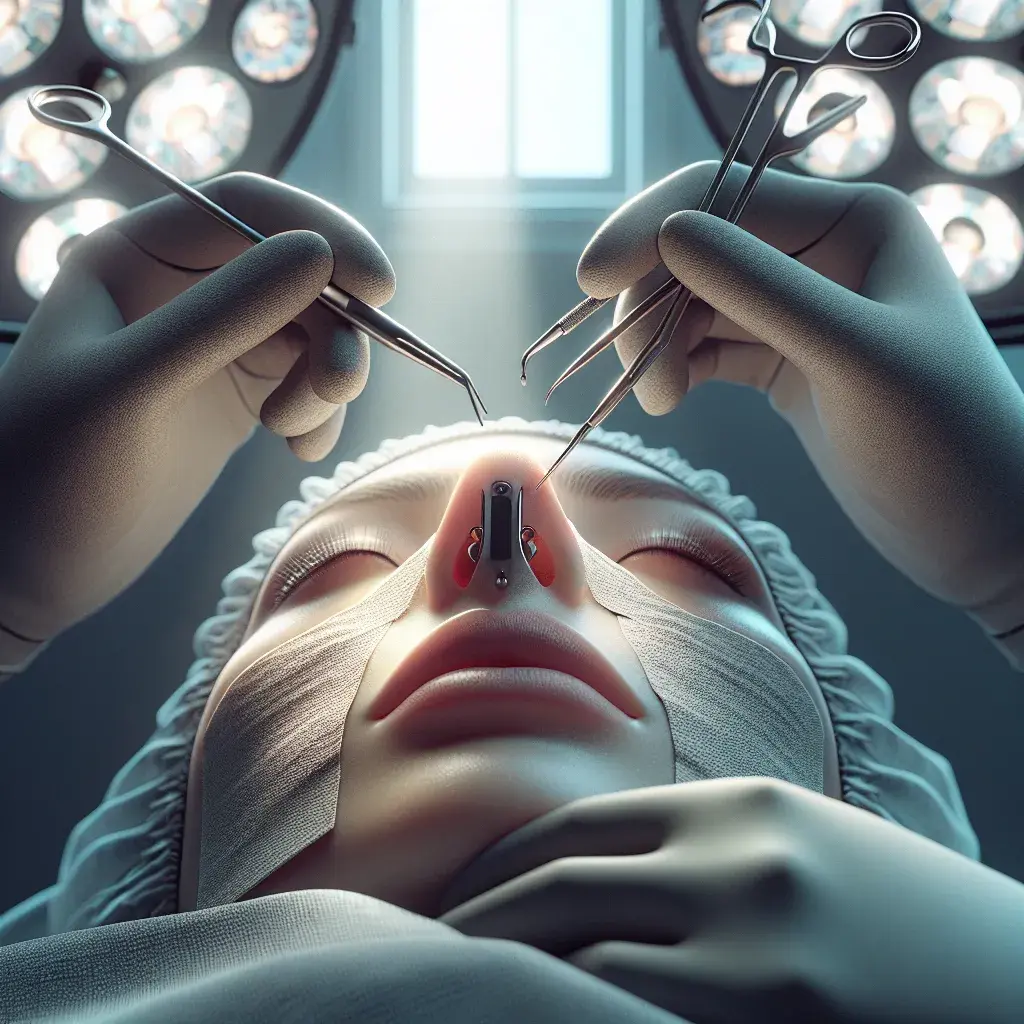
Rhinoplasty, commonly known as a nose job, is a surgical procedure that alters the form of the nose for aesthetic or functional purposes. This intricate operation involves careful planning and a thorough understanding of the nasal anatomy to deliver desirable outcomes that complement the patient’s overall facial features. In this detailed guide, we dissect the significant components of rhinoplasty surgery to offer readers a profound comprehension.
Key Objectives of Rhinoplasty
- Aesthetic Enhancement: The improvement of the nose’s appearance to better match the patient’s facial symmetry and personal preferences.
- Functional Correction: Addressing nasal issues like deviated septums or breathing difficulties which can significantly impact the quality of life.
- Psychological Well-being: Boosting self-confidence and self-esteem in patients who are self-conscious about their nasal features.
The Rhinoplasty Procedure: An Overview
Rhinoplasty can be performed using different techniques, largely dependent on the individual’s goals and the complexity of the case. There are two primary rhinoplasty approaches:
- Closed Rhinoplasty: All surgical incisions are made within the nostrils, leaving no visible scars.
- Open Rhinoplasty: Involves a small external incision under the nose between the nostrils, allowing for greater visibility and precision during the surgery.
Regardless of the approach, a rhinoplasty typically involves the following steps:
- Anesthesia Administration: To ensure patient comfort and safety during the surgery.
- Incision Placement: Depending on the technique chosen, incisions are made strategically.
- Reshaping the Nose Structure: Cartilage and bone are sculpted to achieve the desired shape.
- Correcting Deformities: Any bumps or deviations are addressed to create a straighter nasal profile.
- Nasal Tip Refinement: The tip of the nose is reshaped for better proportion and aesthetic appeal.
- Closing the Incisions: Sutures are carefully placed either within the nose or along the columella for optimal healing.
Recovery and Aftercare
Postoperative care is a critical element in ensuring a successful rhinoplasty. Patients will likely experience swelling, bruising, and may require nasal packing or splints to help maintain the nose’s new shape. It’s essential to follow the surgeon’s aftercare instructions, which usually include:
- Medication Regimen: To control pain and reduce the risk of infection.
- Activity Limitation: Avoiding strenuous activities to promote healing.
- Sleeping Position: Keeping the head elevated to minimize swelling.
- Follow-Up Visits: To monitor the healing process and remove any non-absorbable sutures.
Rhinoplasty surgery requires a marriage of art and science to achieve a natural-looking outcome that is harmonious with the rest of the face—bearing in mind that each individual’s healing process is unique. An experienced rhinoplasty surgeon not only understands the technical aspects of the surgery but also possesses the aesthetic acumen necessary to tailor a surgical plan that aligns with the patient’s vision and physical structure. By taking a deep dive into the foundations of rhinoplasty surgery, one can approach this transformative procedure with clarity and confidence.
The Psychological Impact of Nose Reshaping: Expectations vs. Reality
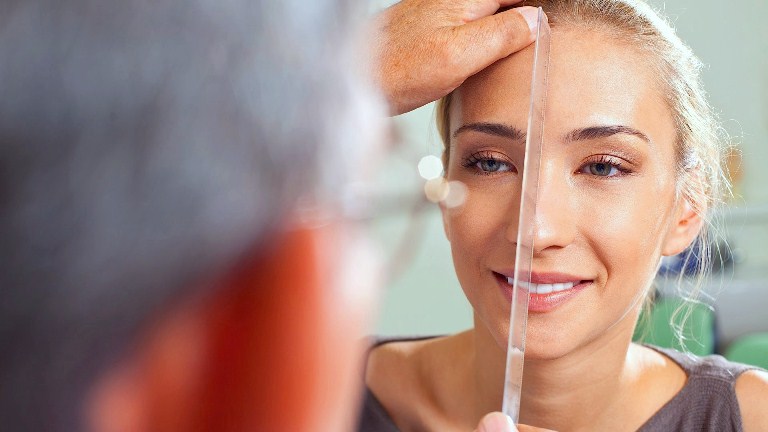
The contemplation of undergoing nose reshaping, also termed as rhinoplasty, is often fueled by desires to enhance facial harmony and self-confidence. The psychological consequences of this surgical procedure can be significant, profoundly influencing an individual’s mental well-being and social interactions. In this article, we delve into the nuances of psychological impacts associated with nose reshaping, contrasting the expectations many individuals hold with the reality they often confront post-surgery.
Anticipated Benefits of Rhinoplasty
Those considering rhinoplasty frequently harbor expectations of not only an improved external appearance but also elevated levels of self-esteem and social approval. The aspiration for a transformed identity through a more aesthetically pleasing nose is common. However, there is a fine line separating hopeful optimism from unrealistic expectations, which, if not managed appropriately, can lead to postoperative dissatisfaction.
Psychological Outcomes Post-Procedure
Although many individuals do experience positive psychological benefits post-rhinoplasty, including increased confidence and self-perceived attractiveness, it’s crucial to acknowledge that real outcomes can diverge substantially from one’s preoperative dreams. The reality is that any form of cosmetic surgery has the potential to incite a complex psychological journey, replete with mixed emotions and adjustment periods.
Expectations vs. Reality: A Comparative Analysis
| Expectations | Reality |
|---|---|
| Significant boost in self-esteem | Subtle changes in self-perception, with possible need for psychological adjustment |
| Instant gratification and satisfaction post-surgery | A gradual process of acceptance and potential initial dissatisfaction due to swelling/inflammation |
| Immediate and complete transformation of identity | Necessity to adapt to a new self-image, sometimes requiring emotional support |
Patients often imagine a direct correlation between the extent of physical change and psychological well-being post-surgery. Nevertheless, the equation is far more intricate. Rhinoplasty may catalyze a profound psychological evolution, which could include dealing with unexpected reactions from the self and others, navigation through an identity shift, and potential post-surgical complications leading to emotional distress.
Navigating the Psychological Terrain Post-Rhinoplasty
Managing expectations prior to undergoing a rhinoplasty procedure is pivotal to ensure a positive psychological outcome. Mental health professionals often recommend pre-surgical counseling to bridge the gap between expectations and potential realities. In the aftermath, it’s just as crucial to secure a support system, which may include friends, family, or professional help.
In conclusion, while nose reshaping has the capacity to render profound psychological benefits, the journey from anticipation to post-surgical adjustment is replete with complexities that merit careful consideration. The key to a rewarding rhinoplasty experience lies in maintaining realistic expectations, obtaining thorough pre-procedural counseling, and ensuring comprehensive post-operative support. By embracing this multifaceted approach, individuals can navigate their transformation with a balanced perspective, optimizing their emotional and psychological satisfaction post-procedure.
Anatomical Considerations in Nose Reshaping Procedures

When it comes to nose reshaping procedures, often referred to as rhinoplasty, understanding the intricate anatomy of the nasal structures is paramount for achieving both aesthetic and functional success. Renowned for its complexity, the nose is a central feature of the face, and its form has a profound impact on the overall facial harmony. Therefore, surgeons must approach each procedure with meticulous precision, ensuring that alterations complement the patient’s unique facial characteristics, while preserving or enhancing nasal functionality.
Key Structural Elements of the Nasal Anatomy
The nose comprises numerous structural elements that together define its shape, size, and function. Firstly, the nasal skeleton is made up of both bone and cartilage, with the upper third of the nose primarily consisting of the nasal bones, and the lower two-thirds composed of various cartilaginous components, including the septal, lateral, and alar cartilages. The interplay of these structures is crucial in determining the nose’s contour and airflow dynamics. Surgeons must take great care when reshaping the nasal bones and cartilage to avoid compromising the nose’s structural integrity.
Considerations for Nasal Function
Nasal function is just as important as its aesthetics. The internal nasal passages, lined with mucosal tissue and supported by the turbinates, are responsible for humidifying, filtering, and warming the air we breathe. In rhinoplasty, special consideration must be given to these functional aspects of nasal anatomy. Any alterations to the nasal framework or lining should aim to preserve, or if possible, improve the nasal airway to ensure that the patient’s respiratory efficacy is not hindered post-procedure.
The Importance of Customized Rhinoplasty Planning
Every individual’s nasal anatomy presents a unique set of challenges and opportunities for cosmetic and corrective enhancements. This variability necessitates a highly personalized approach to nose reshaping. Preoperative analysis, which often includes detailed imaging and discussion of the patient’s desires and expectations, allows surgeons to craft a surgical plan that is precisely tailored to the patient’s anatomical features and functional needs. Acknowledging the diversity in nasal shapes across different ethnicities and individuals is essential for achieving results that are natural-looking and culturally congruent.
In summary, adept consideration of anatomical nuances and recognition of the functional importance of the nasal structures are fundamental for successful nose reshaping procedures. With the combination of a thorough anatomic understanding and a bespoke surgical plan, surgeons can deliver results that not only enhance facial aesthetics but also respect and favor the natural physiology of the nose.
Rhinoplasty Techniques: Open vs Closed Approaches
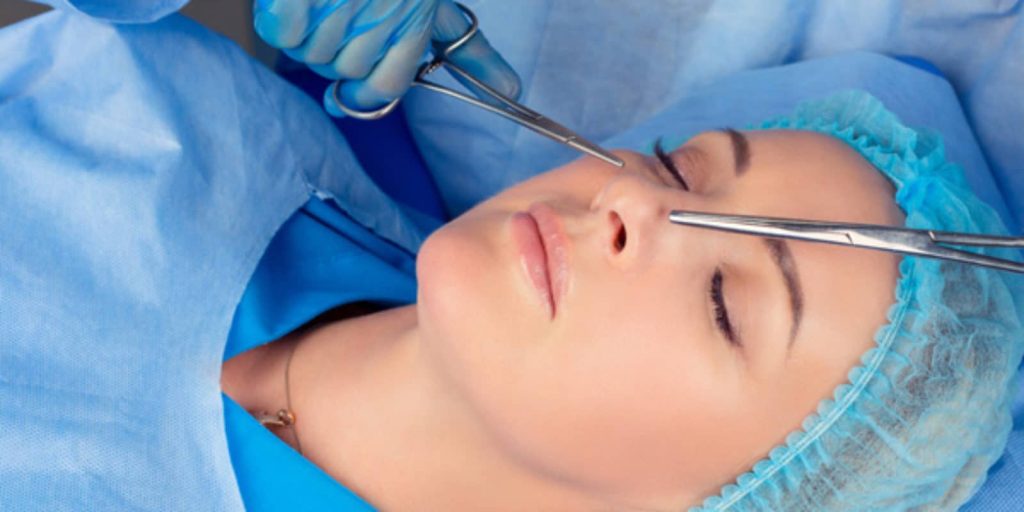
The quest for aesthetic refinement and functional restoration has led to the development of various surgical techniques in rhinoplasty. Two primary methodologies have emerged at the forefront of nasal surgery: the open and closed rhinoplasty approaches. Both possess distinct advantages and implications, influencing outcomes and patient satisfaction. This article endeavors to explicate the nuances of these methodologies, guiding patients and practitioners in making informed decisions.
Open Rhinoplasty Technique
Open rhinoplasty, also known as external rhinoplasty, is characterized by an incision made across the columella—the fleshy end between the nostrils. This approach provides the surgeon with more direct visibility and access to the nasal structure as the nasal skin is lifted off the framework.
- Visibility: Enhanced visibility of the nasal anatomy allows for meticulous sculpting.
- Modification: Ideal for complex nasal deformities or secondary revisions.
- Access: Simplifies the placement of grafts and sutures for structural support.
However, open rhinoplasty typically results in prolonged swelling and a small scar on the columella, which, in most cases, heals well and becomes inconspicuous over time.
Closed Rhinoplasty Technique
Closed rhinoplasty, or endonasal rhinoplasty, involves incisions confined within the nostrils. This procedure leaves no visible scarring on the outside of the nose and is associated with reduced operative times and post-operative swelling.
- Recovery: Patients often experience quicker recovery periods post-surgery.
- Scarring: Absence of external scars reinforces the appeal for patients seeking discretion.
- Delicacy: Demands precise surgical skills as access and visibility are somewhat limited.
While closed rhinoplasty offers certain benefits regarding recovery and scarring, it may not be suitable for all cases, particularly in more complex or detailed nasal reconstructions.
Comparative Analysis of Open vs. Closed Rhinoplasty
| Criteria | Open Rhinoplasty | Closed Rhinoplasty |
|---|---|---|
| Visibility | Superior visibility of nasal structures | Limited visibility |
| Scarring | Small visible scar on columella | No visible external scars |
| Recovery | Longer swelling, potentially longer recovery | Quicker recovery with reduced swelling |
| Surgical Access | Extensive; facilitates complex modifications | Restricted; best for less complex cases |
In summary, the choice between open and closed rhinoplasty techniques should be individualized, with considerations of the patient’s anatomical needs, desired outcomes, and potential trade-offs. Renowned for its comprehensive approach, open rhinoplasty provides a panoramic view of the nasal structure, favoring intricate adjustments. Meanwhile, closed rhinoplasty is esteemed for its subtlety and minimal invasiveness, supporting faster recovery while presenting some limitations in terms of surgical access and correction capabilities.
Both aesthetic outcomes and functionality must be weighed carefully by the surgeon and the patient. Ultimately, the expertise and recommendation of the rhinoplasty surgeon play pivotal roles in determining the most suitable technique for achieving the patient’s vision for nasal refinement.
Preoperative Assessment: Ensuring the Best Outcomes in Rhinoplasty
The prospect of undergoing rhinoplasty, commonly referred to as a “nose job,” can be simultaneously exciting and daunting for patients. An integral component of successful outcomes lies in the preoperative assessment. This systematic evaluation encompasses a variety of crucial factors that directly influence the feasibility, safety, and satisfaction associated with the surgical procedure. In the following sections, we will delve into the comprehensive elements that contribute to an effective preoperative assessment for rhinoplasty candidates.
Patient History and Motivations
The initial stage of the preoperative assessment involves obtaining a detailed medical history and understanding the patient’s motivations for seeking rhinoplasty. Surgeons must be vigilant in screening for any underlying health conditions that could complicate surgery or anesthesia. Psychological preparedness is just as vital, a fact that mandates a thorough exploration of the patient’s self-image and expectations for post-operative results. Discerning the delicate balance between a patient’s desires and what is surgically possible is paramount to achieving satisfactory outcomes.
Physical Examination
A meticulous physical examination of the nose – both externally and internally – is indispensable. Structural anomalies, the condition of the nasal skin, as well as nasal functionality, must be assessed. Deviations, asymmetries, or past injuries can significantly impact the surgical approach. At this juncture, it’s essential to evaluate the patient’s anatomical suitability and discuss potential limitations, providing a bridge between the patient’s aspirations and the realistic outcomes that can be achieved.
Diagnostic Imagery and Morphing Software
Diagnostic imagery, typically with high-resolution photographs and sometimes complemented with CT scans, serves as a cornerstone for preoperative planning. Visually capturing all angles of the nose establishes a reference point from which surgical adjustments are planned. With the advent of morphing software, surgeons can simulate expected outcomes on digital images, thus providing the patient with a visual representation of the predicted surgical results. This interactive process also furthers the alignment of patient expectations with procedural realities.
Collaboration with Anesthesiology
The assessment phase would be incomplete without coordinating with anesthesiology colleagues. Their expertise ensures that each patient receives a tailored anesthesia plan reflective of their individual health status and the specific nuances of the rhinoplasty procedure. Safeguarding the patient’s comfort and safety throughout the surgery is of the utmost importance—the collaboration between surgical and anesthesia teams is undeniably instrumental in life-altering operations such as rhinoplasty.
Ultimately, the goal of the preoperative assessment is to marry the art and science of cosmetic surgery, to ensure predictably positive outcomes. The culmination of patient history, physical examination, diagnostic imaging, and collaborative planning is what equips both the surgeon and patient for a journey that is as seamless as possible leading up to, during, and following the rhinoplasty procedure.
The Role of Computer Imaging in Rhinoplasty Planning
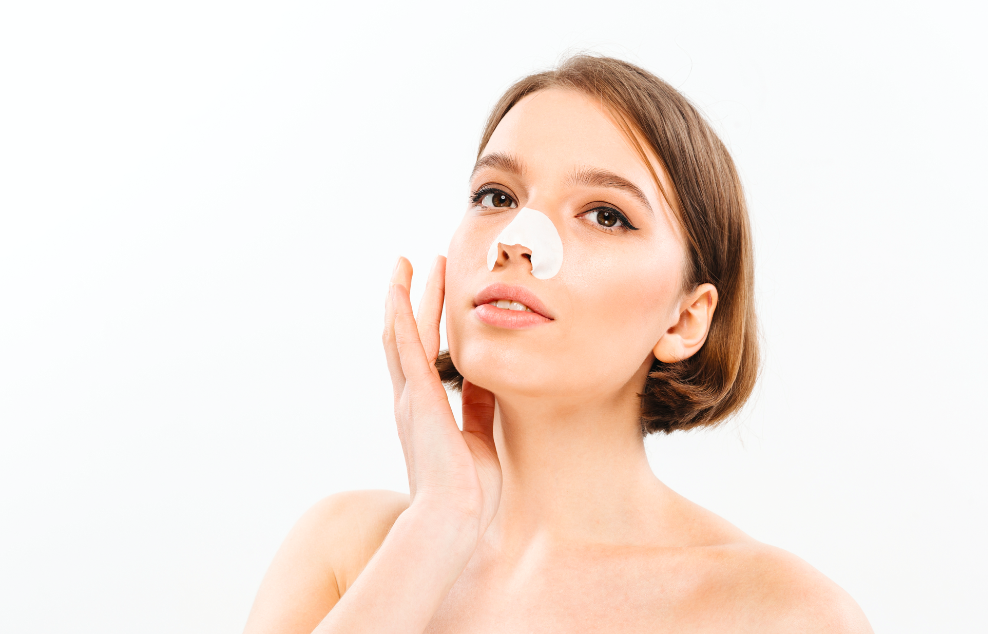
When considering rhinoplasty, or what many refer to as a “nose job”, the interplay between patient expectations and surgical reality is of utmost importance. The advent of computer imaging has revolutionized the preoperative planning phase, providing a visual dialogue between the patient and surgeon. This sophisticated technology allows individuals to envision potential outcomes and participate more actively in their treatment planning.
Visualizing Surgical Outcomes
At the heart of rhinoplasty planning, computer imaging affords the unique opportunity to project postoperative nasal contours. Utilizing digital tools, the surgeon can manipulate images of the patient’s nose to represent the surgical alterations being considered. This process can greatly enhance patient comprehension and satisfaction, as it provides a tangible reference for the desired aesthetic result.
Enhancing Doctor-Patient Communication
Effective communication is essential in all aspects of healthcare, particularly in cosmetic surgery. Through the use of computer imaging, expectation management becomes more accurate and realistic. By presenting morphed images of the nose, surgeons can set achievable targets, thus minimizing the risk of postoperative dissatisfaction. This visual aid acts as a bridging gap between what a patient desires and what is surgically feasible.
Customizing Surgical Approaches
“Computer imaging stands as a pillar in the modern approach to rhinoplasty, enabling a customized surgical roadmap tailored to each unique facial structure.”
Different noses demand different surgical maneuvers. The images generated are not a one-size-fits-all but a carefully curated plan that respects the patient’s distinct anatomical features. Computer imaging facilitates a bespoke approach, enabling surgeons to modify their techniques accordingly.
Preoperative Analysis: The Technical Perspective
From a technical standpoint, computer imaging provides a detailed analysis of nasal anatomy. Surgeons can evaluate structural asymmetries and deviations with greater precision. This tool transcends the traditional boundaries of preoperative assessment, giving rise to an elevated level of preoperative analysis and surgical planning.
Limitations and Considerations
While computer imaging is a transformative instrument in rhinoplasty planning, it is vital to acknowledge its limitations. It is not a guarantee of surgical outcome, but a hypothesis of the potential result. External factors such as skin thickness, healing processes, and individual tissue responses can influence the actual outcome, and thus, should be discussed in depth with patients.
In summary, computer imaging in rhinoplasty planning plays a critical role in enhancing the patient experience, refining surgical approaches, and improving the overall precision of cosmetic nasal surgeries. As technology continues to advance, so too will the capabilities and applications of computer imaging in the dynamic field of facial plastic surgery.
Postoperative Care and Recovery Timeline After Rhinoplasty
Rhinoplasty, commonly known as a nose job, is a plastic surgery procedure that reshapes the nose for aesthetic or functional reasons. Recovery from rhinoplasty is a gradual process, and it’s essential for patients to understand the postoperative care required for a successful healing journey. Below, we outline a detailed timeline to help patients set realistic expectations and prepare for the weeks following their surgery.
Immediate Postoperative Period (Day 1 to 7)
- Rest: Ensure complete rest with the head elevated to reduce swelling. Avoid strenuous activities as they can increase blood pressure and cause bleeding.
- Pain Management: Mild to moderate pain can be experienced. Painkillers prescribed by your surgeon should be taken as directed.
- Nasal Care: Keep the nasal splint dry and in place. Refrain from blowing your nose to facilitate internal healing.
Early Recovery Phase (Week 1 to 2)
- Splint Removal: Typically, any external nasal splints or dressings are removed within 7-10 days post-surgery.
- Bruising and Swelling: Most bruising should begin to subside, although swelling may persist for several weeks.
- Skin Care: Gentle cleaning around the nose is allowed; however, avoid any pressure and follow your surgeon’s skincare recommendations.
Intermediate Phase (Week 3 to 6)
- Increased Activity: Gradual reintroduction of physical activities can commence, avoiding contact sports or exercises that may impact the nose.
- Nasal Congestion: This may continue due to internal swelling but should steadily improve over time.
- Follow-Up Appointments: Keep regular checkups with your surgeon to monitor progress and address any concerns.
Late Recovery Phase (Month 2 to 6)
- Subsiding Swelling: Swelling continues to diminish, and the nose’s appearance will start to settle into its new shape.
- Exercise: Return to your normal exercise routine with your surgeon’s consent.
- Final Results: Although the nose may still be subtly changing, the more permanent results are typically visible by the end of this period.
Rhinoplasty recovery varies slightly among individuals, and it’s critical to follow your surgeon’s customized advice closely. Taking ample time to rest and avoiding any activities that pose a risk to the nose are key factors in ensuring a smooth recovery. It is also imperative to communicate with your healthcare provider regarding any symptoms or concerns during the recovery process. Patience is paramount, as the final results of the surgery may take up to a year to fully manifest, especially in terms of resolving all residual swelling. Consulting with an experienced board-certified surgeon is the best first step for those considering rhinoplasty, and this will also ensure a thorough understanding of the recovery timeline specific to your surgical procedure.
Common Complications and How to Minimize Risks in Nose Reshaping Surgery
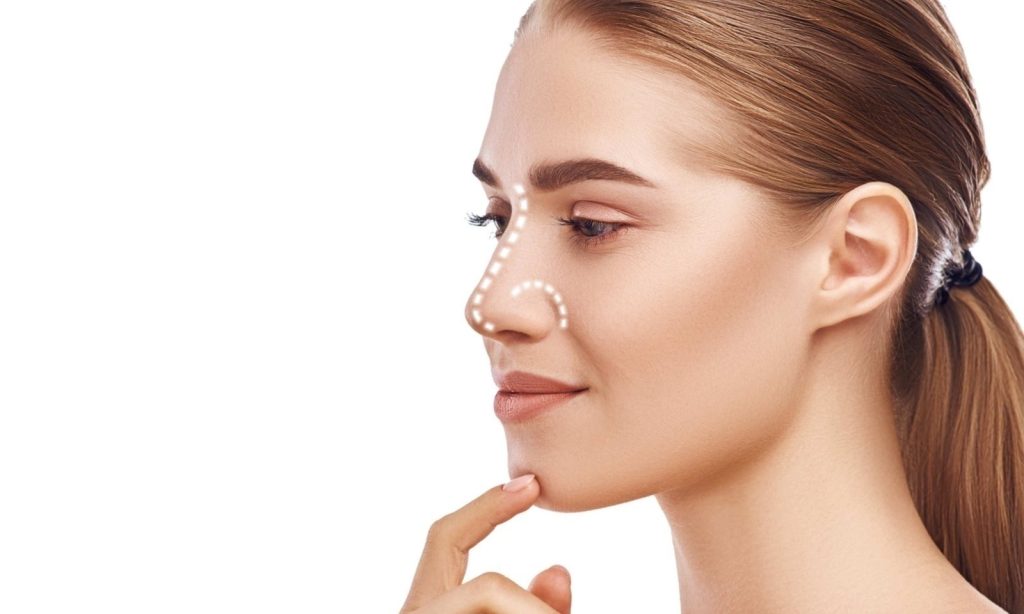
Rhinoplasty, commonly referred to as a nose job or nose reshaping surgery, is a complex procedure that alters the structure of the nose for either aesthetic or functional reasons. While it’s one of the most popular cosmetic surgeries, it carries its share of potential complications. Understanding these risks and the strategies to minimize them can lead to a safer operation and more satisfactory outcome.
Understanding Potential Rhinoplasty Complications
Any surgical procedure has inherent risks, and rhinoplasty is no exception. Some of the complications that may arise from nose reshaping surgery include:
- Infection: Although rare, infections can occur and may require antibiotics or additional surgery to resolve.
- Bleeding: Some blood loss is typical, but excessive bleeding can lead to hematomas and further complications.
- Breathing difficulties: Changes in the nasal structure can impact airflow, sometimes negatively.
- Anesthesia risks: Reactions to anesthesia, though uncommon, can have serious implications.
- Unsatisfactory results: Some patients may not be happy with the aesthetic outcome, necessitating revision surgery.
- Scarring: While generally internal and not visible, poor healing can lead to more noticeable scars.
Minimizing the Risks Associated with Rhinoplasty
There are multiple strategies to minimize the risks involved in rhinoplasty:
| Risk Management Strategy | Description |
|---|---|
| Choose a Qualified Surgeon | Ensure your surgeon is board-certified and experienced in rhinoplasty. |
| Have a Detailed Consultation | Discuss your goals and medical history thoroughly to align expectations and identify potential issues. |
| Follow Pre- and Post-Operative Instructions | Adhere strictly to your surgeon’s guidelines regarding medication, rest, and activity levels before and after surgery. |
| Opt for Minimally Invasive Techniques | Whenever possible, less invasive approaches can reduce recovery time and scarring. |
| Healthy Lifestyle Choices | Maintain a healthy diet, avoid smoking, and limit alcohol consumption to promote better healing. |
Transparent communication between patient and surgeon is vital in minimizing rhinoplasty risks. By fully understanding a patient’s medical history and aesthetic goals, a surgeon can plan a procedure tailored to the individual’s unique needs, thus reducing the likelihood of complications.
To further safeguard against risks, patients should feel empowered to ask for testimonials, before-and-after pictures, and detailed information about the surgeon’s experience with rhinoplasty. Doing so can reassure the patient of the surgeon’s expertise and ability to handle any potential complications effectively.
In conclusion, nose reshaping surgery requires an informed approach to reduce risks and optimize outcomes. By selecting a qualified and experienced surgeon, clearly communicating your goals and concerns, and following all pre- and post-operative instructions, you can greatly increase the chances of a successful and satisfying rhinoplasty experience.
Revision Rhinoplasty: Addressing Unsatisfactory Results
Undergoing a rhinoplasty, commonly referred to as a “nose job,” is a significant decision for many, taken with the expectation of enhancing facial harmony and, in some cases, improving breathing functionality. Yet, despite meticulous planning and skilled execution, some patients may find themselves discontented with their outcomes, leading them to consider revision rhinoplasty. This specialized procedure aims to correct or refine the results of an initial rhinoplasty, providing patients with the improved aesthetic or functional results they initially envisaged.
Understanding the Complexity of Revision Rhinoplasty
It is crucial to acknowledge that revision rhinoplasty is markedly more complex than a primary procedure. Surgeons must navigate previous surgical alterations, scar tissue, and altered nasal anatomy. Patients seeking revision need to find a surgeon with specialized training in facial plastic surgery and specific experience in secondary nasal surgeries. The surgeon’s detailed understanding of the nasal structure and expertise in revision techniques are pivotal in addressing the unique challenges of these cases.
Selecting the Right Surgeon for Your Revision Rhinoplasty
Choosing a surgeon with a remarkable track record in revision rhinoplasty is paramount. Prospective patients should thoroughly research board-certified plastic surgeons, scrutinize before-and-after photos of previous patients, and examine patient testimonials and reviews. An in-depth consultation with the surgeon can provide valuable insights into their approach and the tailored strategies they might employ in your case. Communication between patient and surgeon is a cornerstone, ensuring that both parties share a clear understanding of the desired outcome and the realistic possibilities.
Preparing for the Revision
Patients must have realistic expectations and a clear grasp of the potential limitations of a secondary procedure. Recovery from revision rhinoplasty may be lengthier than the initial surgery due to the complexities involved. Detailed preoperative discussions and planning are essential, and patients should be prepared for a thorough pre-surgery regimen to optimize their healing process. Additionally, they need to be open to the possibility that achieving the best outcome may require patience and possibly multiple interventions.
Conclusion
A successful revision rhinoplasty can have a profound impact on a patient’s self-perception and quality of life. It offers a chance to address unsatisfactory results and fulfill one’s aspirations for a balanced and aesthetically pleasing nasal appearance. With the correct surgeon, a comprehensive plan, and realistic expectations, patients can approach a secondary procedure with confidence, aspiring to the positive change they seek.
The Evolution of Rhinoplasty: Past, Present, and Future Trends
The pursuit of facial symmetry and aesthetic refinement has persisted through the ages, with rhinoplasty standing as one of the most sought-after cosmetic procedures. As we delve into the annals of rhinoplasty, we witness a medical and artistic evolution that reflects broader cultural and technological advances. This article provides a comprehensive overview of the historical progression, current practices, and emerging trends within the field of nasal surgery, charting a course through its fascinating transformation.
The Origins and Historical Progression
Rhinoplasty’s origins can be traced back to ancient civilizations where initial attempts to reconstruct the nose were documented. However, it was not until much later that the foundations of modern rhinoplasty were established.
- Antiquity: Reconstruction of noses in ancient Egypt and India, primarily for those who lost their noses due to punitive measures or injury.
- The Renaissance: The period when European surgeons began refining techniques, focusing on functional and cosmetic aspects.
- 19th Century: Surgeons like Johann Friedrich Dieffenbach contributed to the evolution with innovative surgical approaches.
The Maturation of Techniques in the 20th Century
The 20th century witnessed the rise of new techniques and a deeper understanding of nasal anatomy. This era also introduced the concept of ‘closed’ and ‘open’ rhinoplasty, revolutionizing the approach surgeons take.
- Early 1900s: Techniques improved with reduced scarring and better functional results.
- Mid-1900s: The development of the ‘closed’ rhinoplasty which involved incisions within the nasal passages.
- Late 1900s: Surgeons like Dr. Jack Sheen and Dr. Gilbert Aiach, pioneered the ‘open’ rhinoplasty method allowing for a more precise and comprehensive restructuring.
Rhinoplasty in the Present Day
Today, rhinoplasty is characterized by a tailored approach, with procedures designed to align with each patient’s unique facial structure, and aesthetic goals. Cutting-edge techniques and tools have significantly enhanced outcomes.
- 3D imaging and simulators assist in pre-operative planning and patient communication.
- Piecemeal cartilage grafting techniques enable surgeons to replicate the natural contour and function of the nose.
- Refinements in anesthesia and post-operative care have reduced recovery times and improved comfort.
Anticipating the Future: Innovations on the Horizon
As we look to the future, we can anticipate several trends and innovations poised to further elevate rhinoplasty to new heights of precision and patient satisfaction.
- Nanotechnology: The potential use of nanomaterials for enhanced healing and scar reduction.
- Bioprinting: 3D printing of cartilage to create custom implants and grafts tailored to patient anatomy.
- Genetic Therapy: Using genetic data to predict and enhance outcomes by understanding individual healing processes.
Conclusion
In conclusion, the journey of rhinoplasty from its rudimentary past to the sophisticated present, and toward its dynamic future, mirrors humanity’s incessant quest for self-improvement and innovation. By closely examining the past achievements and contemplating future possibilities, medical professionals continue to push the boundaries of what is possible in the world of cosmetic surgery. The evolution of rhinoplasty is a testament to the ever-changing landscape of medical science, where the constant is an unyielding drive to perfect the harmony between form and function.
Throughout its history, rhinoplasty has been shaped by numerous socio-cultural and scientific factors, rendering it not just a medical procedure, but a representation of human artistry and ingenuity. As we embrace emerging technologies and approaches, we stand on the cusp of an era that holds the promise of unprecedented achievements in the realm of cosmetic and reconstructive nasal surgery.
Frequently Asked Questions
What is rhinoplasty?
Rhinoplasty, commonly known as a nose job, is a surgical procedure to change the shape of the nose for either cosmetic reasons or to improve breathing.
How long does it take to recover from rhinoplasty?
Recovery times can vary, but most people can return to work or school within one to two weeks. However, full healing can take up to a year for the nose to fully settle into its new shape.
Is rhinoplasty painful?
Patients typically experience discomfort rather than severe pain, which can be managed with medication prescribed by the surgeon.
Are the results of rhinoplasty permanent?
Yes, the results of a rhinoplasty are permanent, although your nose may change shape slightly due to the natural aging process.
Can rhinoplasty fix a deviated septum?
Yes, a septorhinoplasty can be performed to correct a deviated septum along with reshaping the nose.
How much does rhinoplasty cost?
The cost of rhinoplasty can vary greatly depending on the complexity of the surgery, the surgeon’s experience, and geographic location. Consult a board-certified plastic surgeon for an accurate estimate.
What are the risks of rhinoplasty?
As with any surgery, risks include bleeding, infection, anesthesia complications, as well as the possibility of unsatisfactory cosmetic results.
Will I have scars after rhinoplasty?
Rhinoplasty scars are usually minimal and well-concealed. In open rhinoplasty, a small scar on the underside of the nose may be visible, but it typically fades over time.
How do I prepare for rhinoplasty?
Preparation may include stopping certain medications, getting a medical evaluation, and avoiding smoking for a certain period before and after the surgery.
Can I wear glasses after rhinoplasty?
It is recommended to avoid wearing glasses directly on the bridge of the nose for several weeks after surgery to prevent pressure on the healing nasal tissues.
